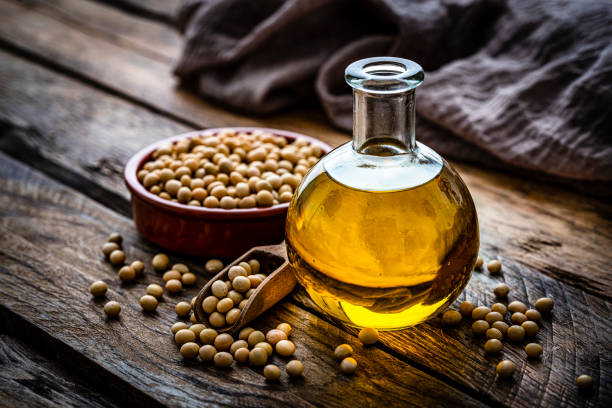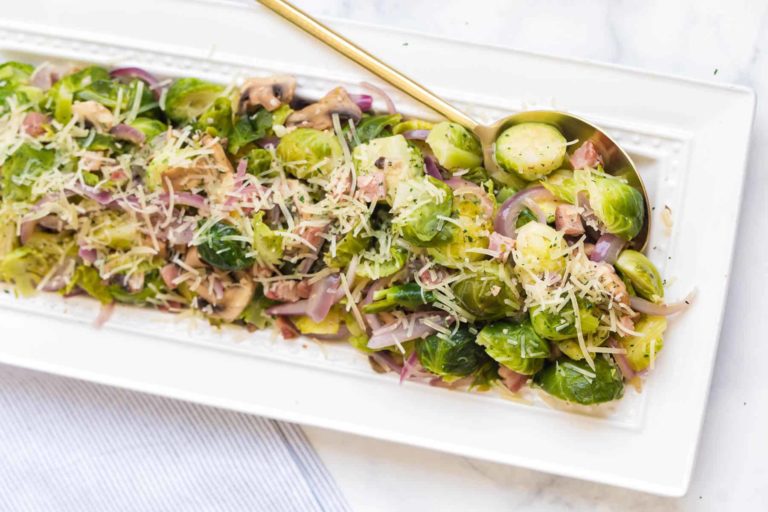Best Cooking Oils to Keep in Your Kitchen
Do you know what the best cooking oils are for your kitchen?
The grocery store shelves are lined with a huge variety of oils that you can use in the kitchen but which ones are used for what? And which ones might just have some health benefits for you?
There are soooo many different types of oil available that you can cook with and eat with, but you might not be sure, so you just grab the cheapest cooking oil off the shelf.
Well let’s change all that!
Some oils are better for high-heat cooking, and some are great for salad dressings. Some are good for sauteing, and others are best for low-temperature cooking.
So, lets look at the different types of cooking oils, and how to use them in your kitchen. Move over, Nigella!
Each type of oil has its own unique flavor and smoke point, so it is important to choose the right oil for your dish.
We’ll also take a quick lok at the health benefits of each type of oil. So, whether you are a beginner cook or an experienced mom-chef, read on to learn all about cooking oils.
Oh, and a little tip: if you are more health conscious and looking for an oil that is good for heart health, look for a cooking oil with less than 4 grams of saturated fat per tablespoon.
Olive Oil
Olive oil is a great oil made from the goodness of the Mediterranean, olives! In fact, the Greeks have been picking these little oval-shaped balls of goodness for over 5,000 years!
But don’t be put off if you don’t actually like eating olives, this oil doesn’t taste like that.
It is a popular cooking oil because it has a high smoke point and a mild flavor, and it is a healthy cooking oil as it helps to prevent or manage diabetes, and it promotes longevity.
The American Heart Association recommends olive oil as a healthier substitute for mayonnaise or butter, and research is showing the olive oil may actually reduce the risk of heart disease.
Olive oil also contains antioxidants, which can help protect your body against disease. Additionally, olive oil is high in monounsaturated fatty acids, which are considered to be healthy fats.
1) Cooking: simply add it to a pan or dish before adding your food
2) Finishing oil: Drizzle it over a cooked dish just before serving
3) Baking: keep in mind that it has a lower smoke point than other oils, so it is best to use it at a lower temperature.
Olive oil is made by extracting the oil by pressing the olives. As it is an oil, it is still high in calories because it is made up only of fat.
In the olive oil family, we get two main types:
> Extra virgin olive oil
> Light olive oil
Extra-virgin olive oil
Smoking point: 375 – 410 degrees F
Best uses: Cool dishes like salads, dips, dressings, and sauteing at low temperatures
Light olive oil
Smoking point: 465 degrees F
Best uses: Sauteing, roasting, grilling, baking, roasting your homegrown beetroot and other homegrown vegetables
Peanut Oils
Peanut oil is made from ground peanuts and is considered a vegetable oil. Its taste and aroma will be stronger if the oil is made with roasted peanuts. It is similar to olive oil in that it is high in monounsaturated “good” fat and low in saturated “bad” fat which is believed to help prevent heart disease and lower cholesterol.
It has a high smoke point and a strong flavor, which makes it perfect for frying foods, even deep frying your french fries which turn out crispy on the outside, yet tender on the inside. Peanut oil is also high in monounsaturated fatty acids, making it a healthy choice for high-heat cooking.
To use peanut oil in your cooking, add it to a pan or dish before adding your food. Peanut oil is also great for marinating meats, as it will help to add flavor and moisture. Because peanut oil has a high smoke point, it is a good option to use for stir fry dishes, onion rings, and even fried green tomatoes.
Store your peanut oil in a cool, dark place away from sunlight.
Refined peanut oil
Smoking point: 450 degrees F
Best uses: Added as a flavoring in dips, dressings, and marinades.
Unrefined peanut oil
Smoking point: 320 degrees F
Best uses: Sauteing, roasting, grilling, baking
Coconut Oils
Coconut oil is quite different from the others as it comes in a white, solid form. An edible oil made from the wick, meat, and milk of the coconut palm fruit.
Coconut oil has a higher smoke point and a subtle tropical flavor, making it a popular choice for cooking. This is an oil-rich in lauric acid, which has been shown to have anti-microbial properties and assists in treating viral infections including influenza, cold sores, and the common cold, to name a few.
Additionally, coconut oil contains medium-chain triglycerides, which can help to boost your metabolism but in saying that, these MCT’s make up only a small amount of the fatty acids in coconut oil.
Coconut oil is solid at room temperature, so it is not a good replacement as a salad dressing. But, it is really good for sauteing and roasting.
The dowside is that coconut oil is high in saturated fat, so use it sparingly in cooking as it raises both (good and bad) cholesterol levels more than other plant-based oils like canola or olive. There is a distinct coconut aroma in unrefined varieties.
If you are trying to lose weight, be mindful of the amount of coconut oil you include in your diet. Even though its tooted for its benefits in the paleo diet world, 1 tablespoon of coconut oil contains 11 grams of saturated fat.
Refined coconut oil
Smoking point: 450 degrees F
Best uses: High-temperature roasting
Unrefined coconut oil
Smoking point: 350 degrees F
Best uses: Low-temperature sauteing, baking
Avocado Oils
Avocados are loaded with healthy monounsaturated fats, so you won’t be surprised to discover that their oil is, too. .
It has a high smoke point and a mild, nutty flavor and is rich in vitamins and minerals, including vitamin E and potassium.
Avocado oil is used as an edible oil and is great both raw in a smoothie, in homemade mayo, or even as a salad dressing, as well as a cooking oil. It has a higher smoking point than olive oil and is a great option for stir-fries.
If you prefer a mild, unobtrusive taste, choose refined avocado oil rather than avocado oil as a carrier oil.
Avocado oil is another edible oil made from the pulp of avocados. It has a high smoke point and a mild, nutty flavor. Avocado oil also contains monounsaturated fatty acids, which are considered to be healthy fats. Additionally, avocado oil is rich in vitamins and minerals, including vitamin E and potassium.
Avocado oil is used as an edible oil and is great both raw in a smoothie, in homemade mayo, or even as a salad dressing, as well as a cooking oil. It has a higher smoking point than olive oil and is a great option for stir-fries.
Refined avocado oil
Smoking point: 520 degrees F
Best uses: High-temperature grilling, baking, sauteing, stir-frying, roasting, frying
Unrefined avocado oil
Smoking point: 375 – 400 degrees F
Best uses: Grilling, baking, sauteing, stir-frying, roasting, frying, searing
Canola & Vegetable Oils
Canola oil is an edible oil that is extracted from the seeds of a plant in the mustard family. It has a neutral flavor and a high smoke point, making it ideal for stir-frying, roasting, grilling, and baking.
Canola oil also contains omega-three fatty acids, which are considered to be healthy fats. Additionally, canola oil reduces the absorption of cholesterol into the body.
It is a great option for cooking and baking because it contains very little saturated fat, and significant amounts of phytosterols which inhibits the absorption of cholesterol.
Smoking point: 400 degrees F
Best uses: Baking, sauteing, stir-frying, roasting
Sesame Oil
Sesame oil is a vegetable oil made from sesame seeds. Due to the inefficiency of the manual harvesting process, mass production of this oil is limited worldwide. It is a delicious and healthy fat to include in your diet.
It has a nutty flavor and a high smoke point, making it perfect for cooking. Sesame oil also contains powerful antioxidants, which can help protect your body against disease. Additionally, sesame oil is rich in vitamins and minerals, including vitamin E which helps protect the skin cells from damage caused by the environment.
As a swirl of toasted sesame oil to soups after serving; it will add a creamy texture when stirred in, and add a depth of flavor too.
Smoking point: 350 – 400 degrees F
Best uses: Sauteing, stir-frying, added flavor as a condiment
To Wrap it Up…
Remember that in general, oils that are liquid at room temperature are better for you, while oils like lard and coconut are solids at room temperature.
A favorite oil for chefs to fry with is canola oil because of its high smoke point and neutral flavor, but because it is chemically processed it does not have much in the way of nutrients. However, when they are sauteing ingredients they tend to avoid canola oil as it does not have much flavor.
If you are only looking to use one or possibly two oils, an excellent choice for your pantry is an extra virgin olive oil. It is best for cooking as well as for eating.
Unrefined oils have a low smoke point and should not be heated as the oils become oxidized, and when it’s oxidized lets off potentially carcinogenic compounds. Unrefined oils are best left in their natural state as they retain their goodness and flavor, as long as they are stored correctly. Unrefined oils are best used as salad dressings.
FAQs
What is the healthiest cooking oil to use?
The healthiest cooking oil depends on your needs and preferences. Olive oil is a popular choice for its heart-healthy fats and antioxidants. Avocado oil is also a great option due to its high smoke point and nutrient content. For high-heat cooking, such as frying, an oil like canola is a good option because they have a high smoke point and neutral flavor.
Can I use olive oil for high-heat cooking?
Yes, you can use olive oil for moderate to high-heat cooking. Extra virgin olive oil has a lower smoke point (around 375°F to 410°F) compared to refined olive oil, which has a higher smoke point (up to 465°F). For frying or other high-heat methods, consider using refined olive oil or other oils with a higher smoke point.
How should I store cooking oils to keep them fresh?
Cooking oils should be stored in a cool, dark place, away from heat and sunlight. This helps prevent oxidation and rancidity. Keeping oils in airtight containers and using them within their recommended shelf life can also help maintain their freshness and quality.
Are there any oils that I should avoid using in my kitchen?
Some oils are less ideal due to their low smoke points or high levels of saturated fats. For example, oils like palm oil and coconut oil have high saturated fat content, which may not be suitable for heart health when used in excess. Additionally, avoid using oils with a low smoke point for high-heat cooking, as they can break down and produce harmful compounds.
Can I use flavored oils for cooking?
Flavored oils, such as garlic or chili-infused oils, can add a unique taste to your dishes. However, they are often best used as finishing oils or for drizzling rather than cooking at high temperatures. When using flavored oils, be mindful of their smoke points and use them appropriately to avoid burning or altering their flavors.


